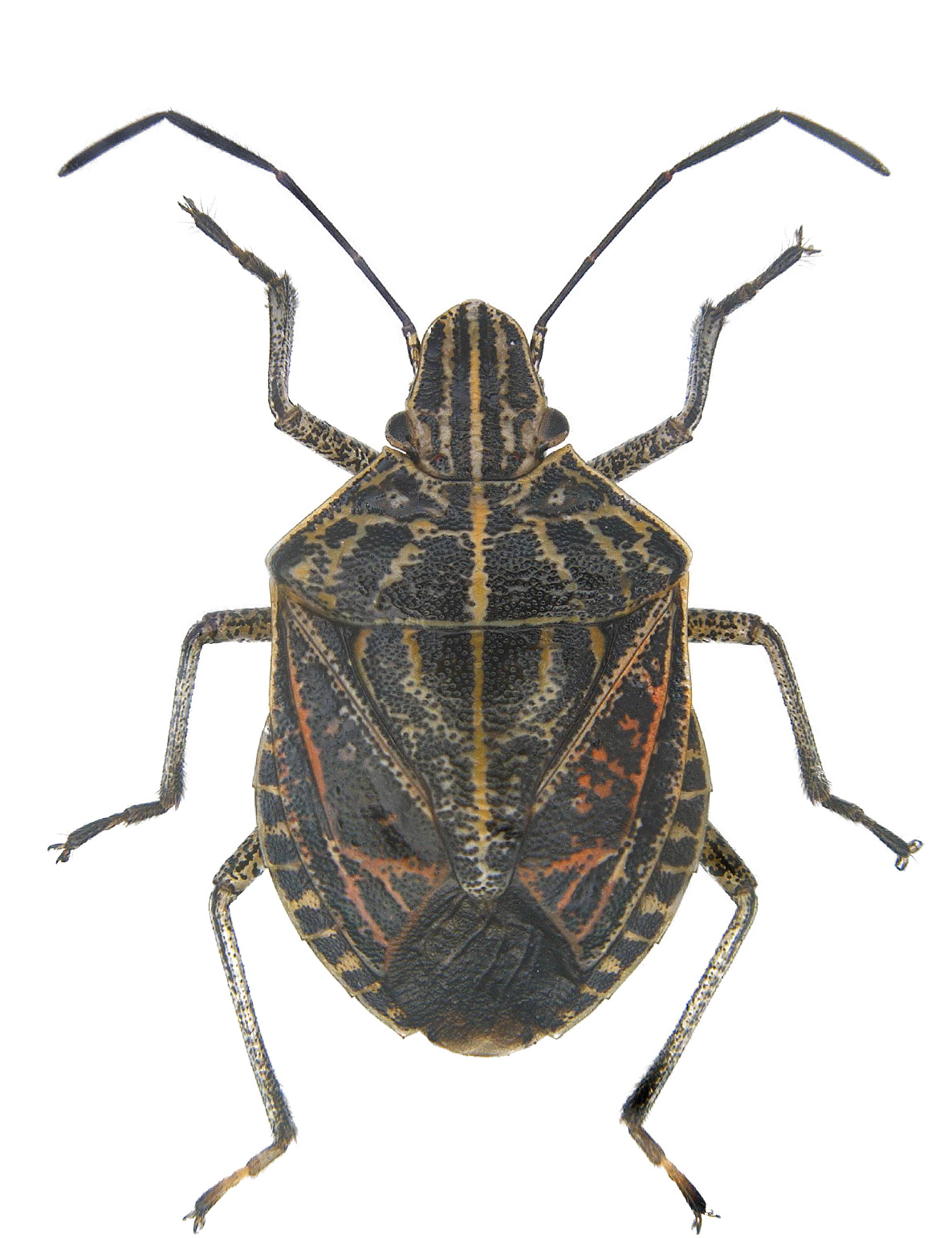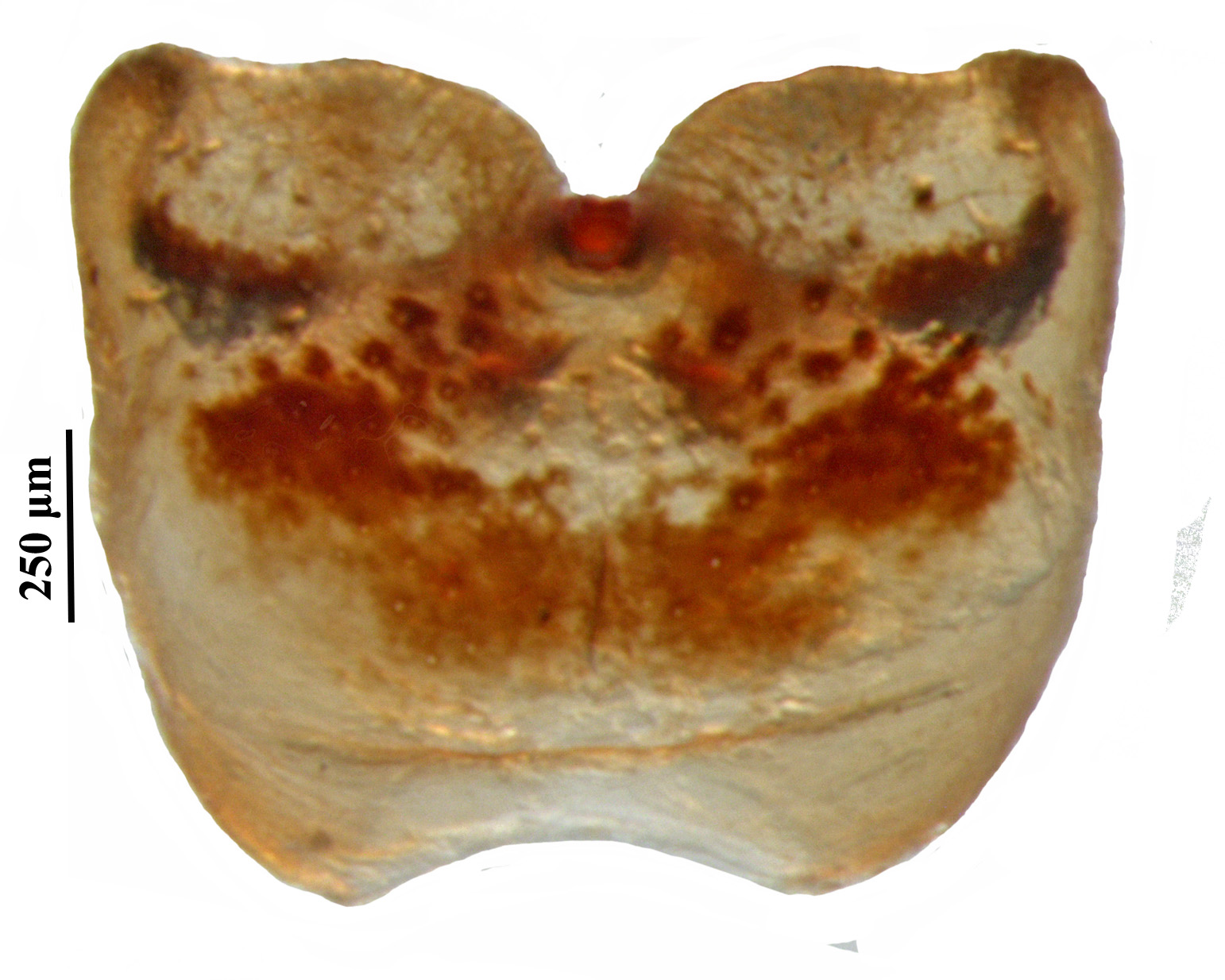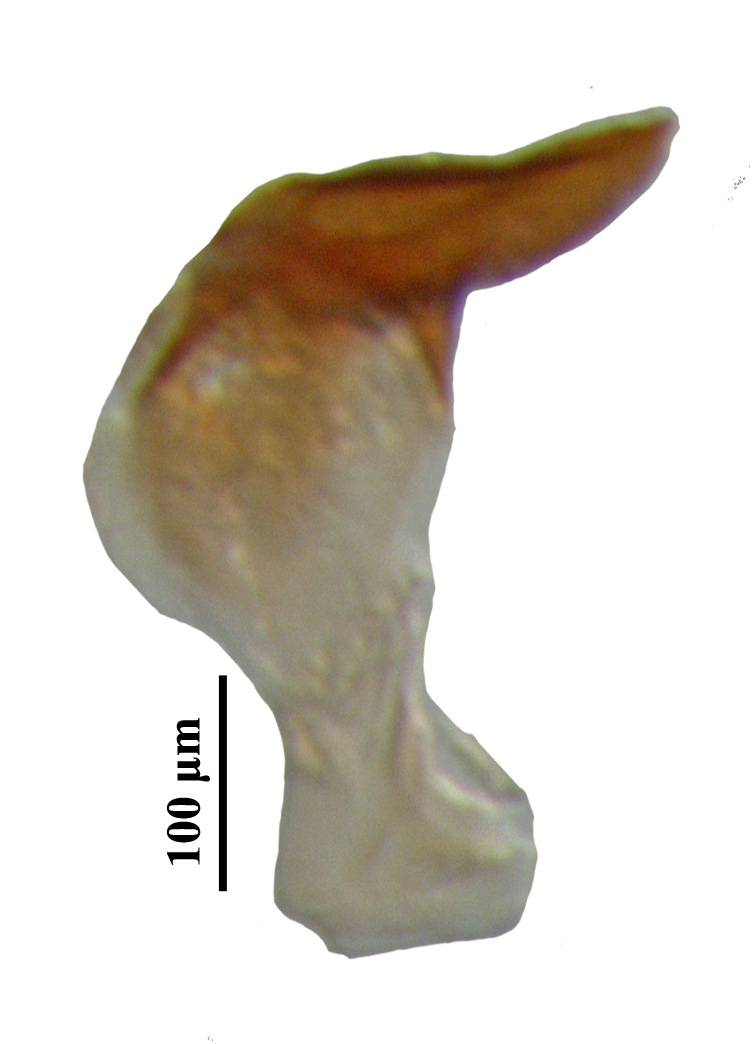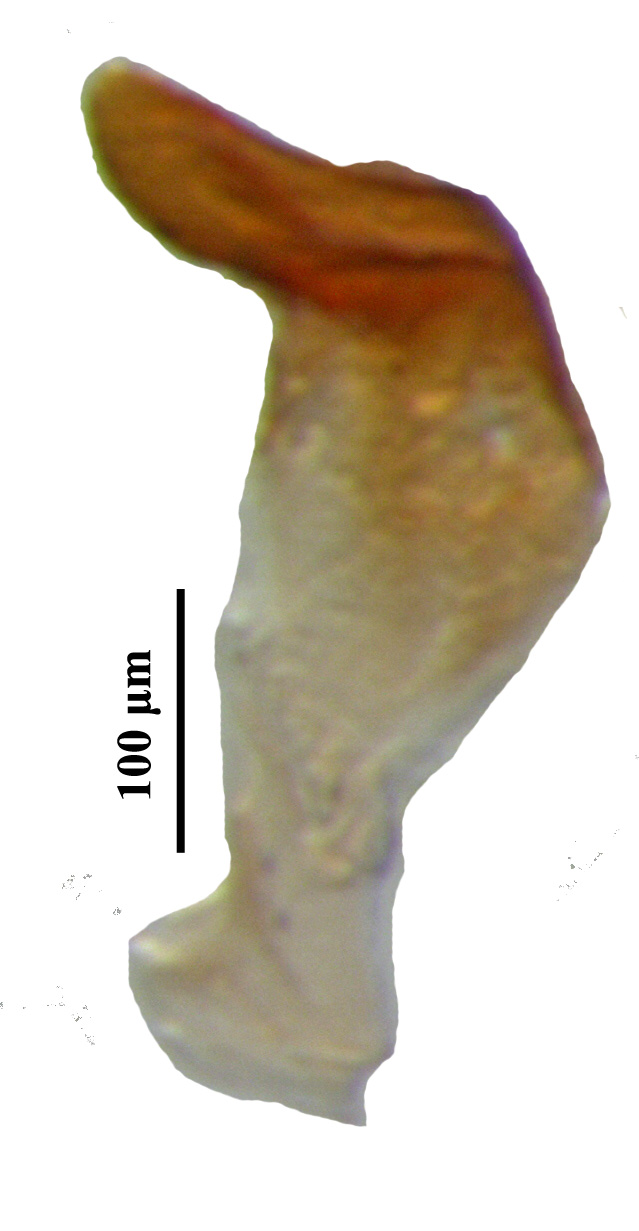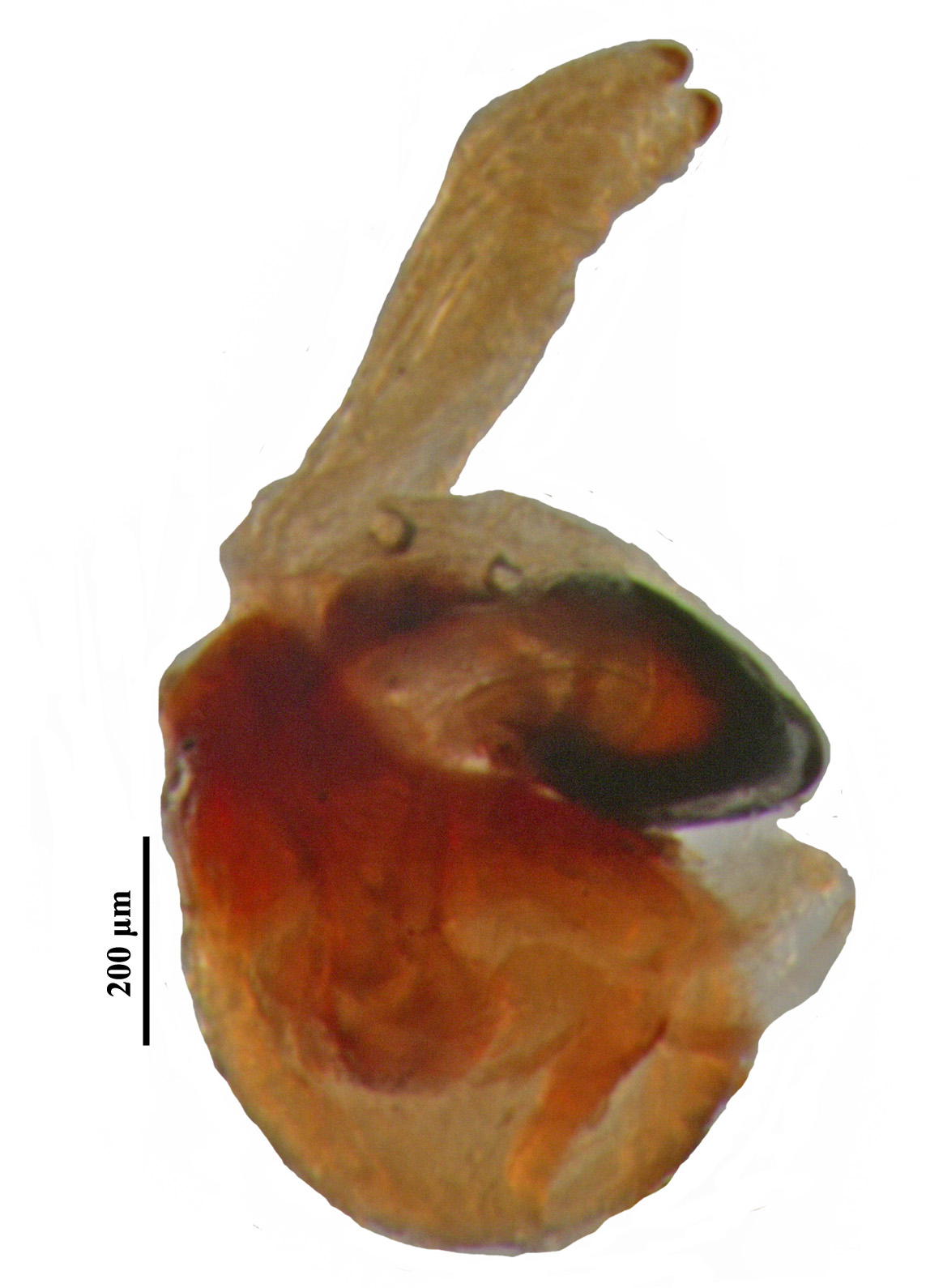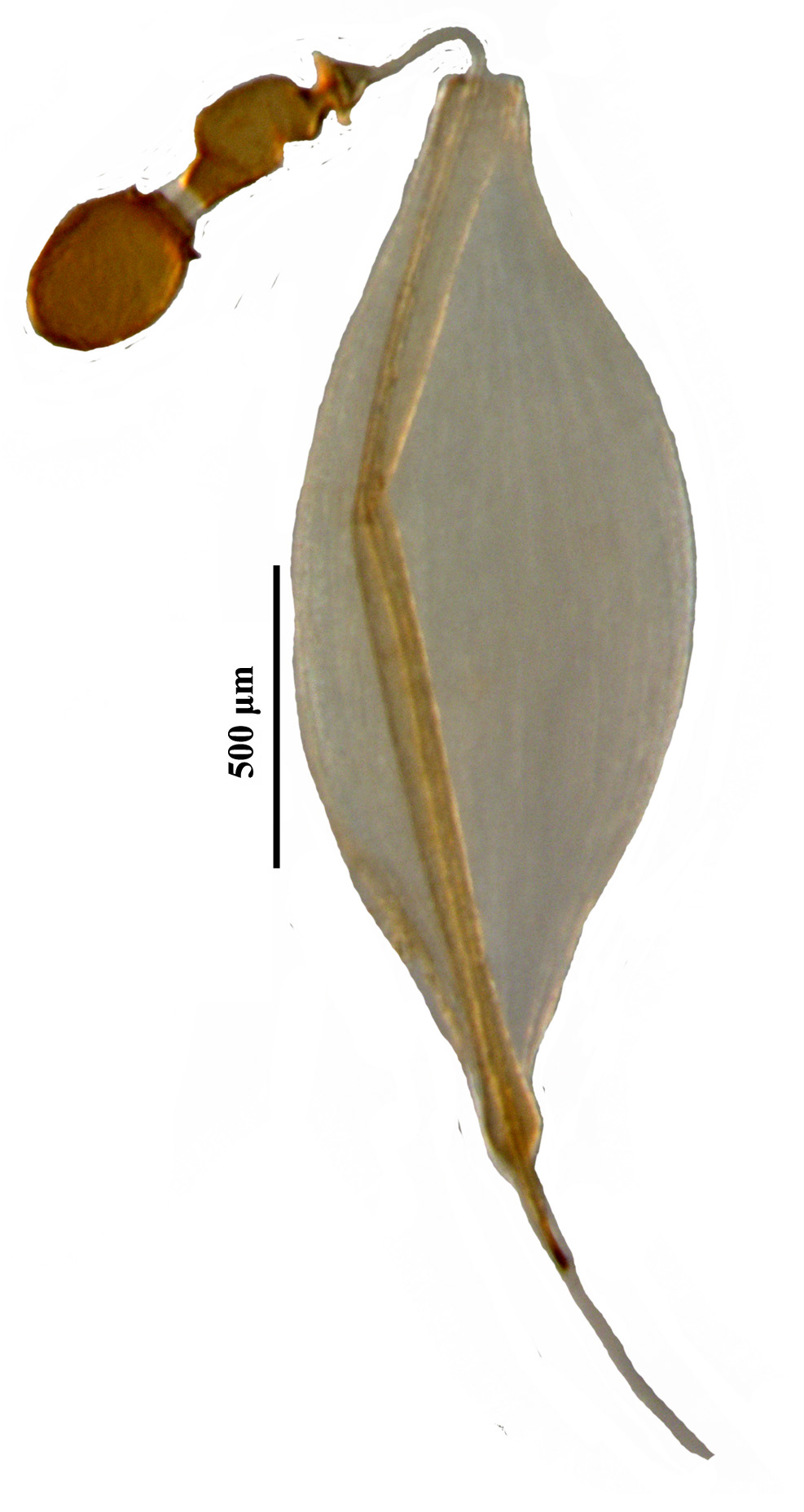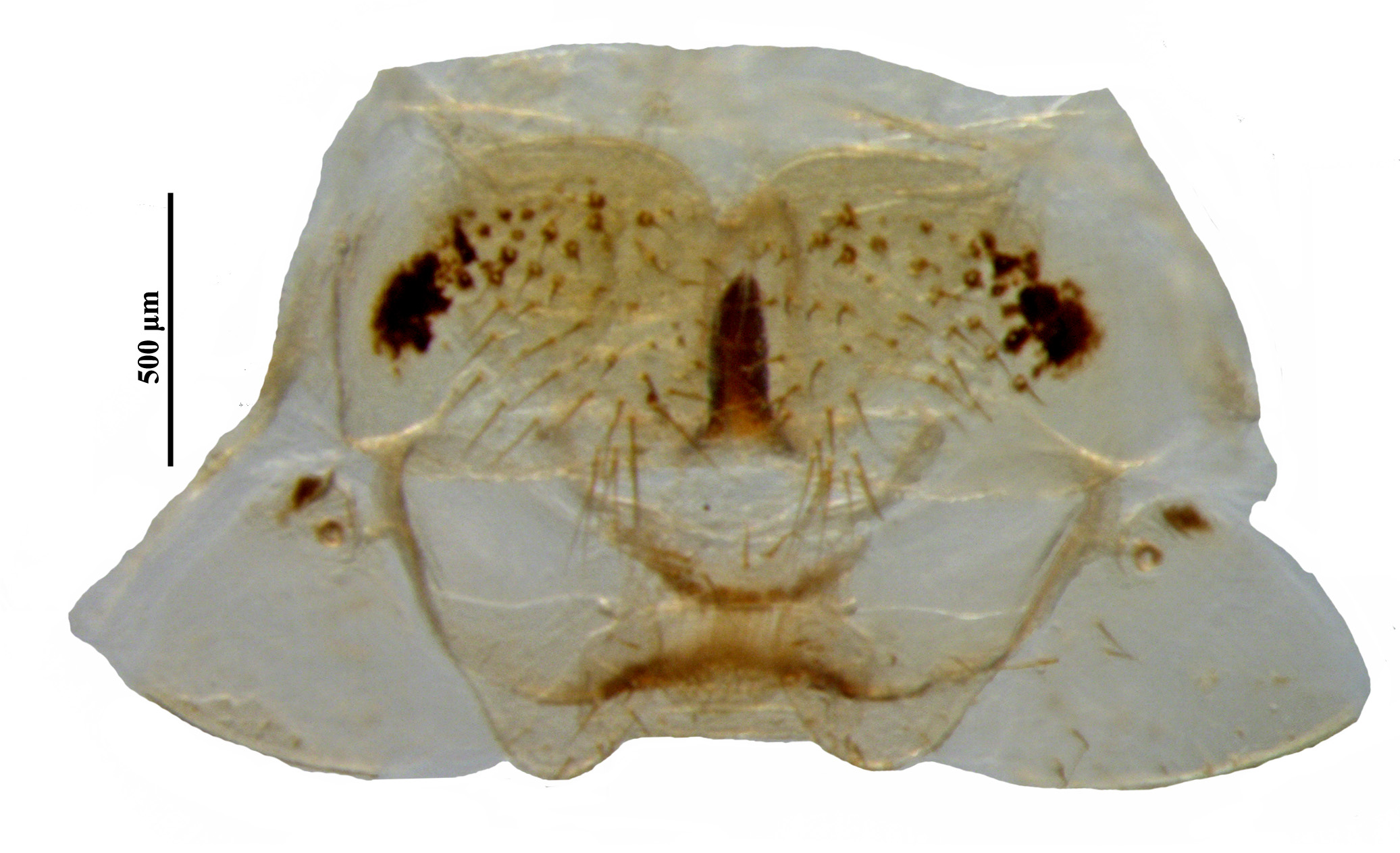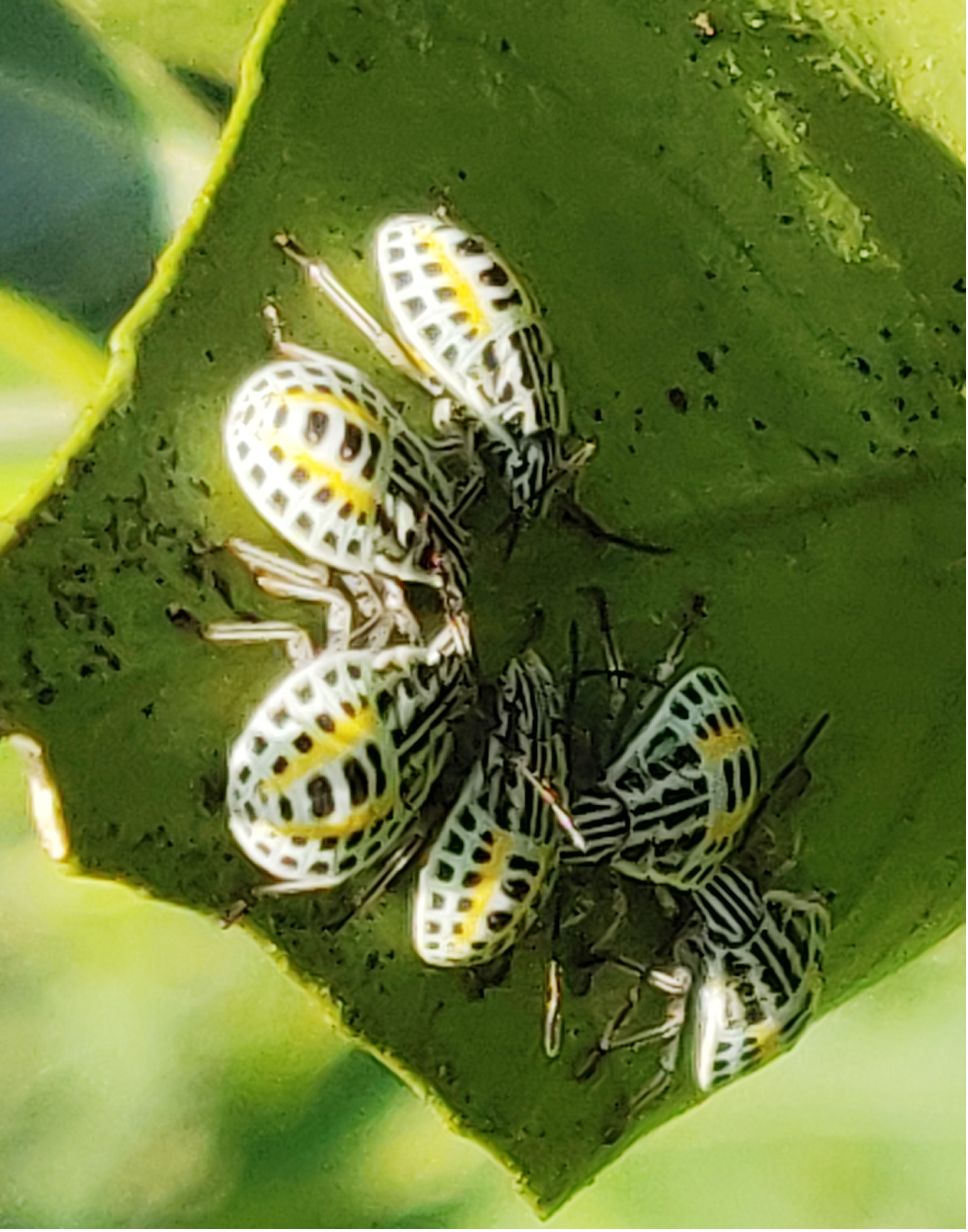Cappaea taprobanensis (Dallas, 1851)
Synonyms
Pentatoma taprobanensis Dallas 1851
Cappaea multilinea. Ellenrieder, 1862
Taxonomic position
Hemiptera: Heteroptera: Pentatomidae: Pentatominae
Diagnosis
- Head distinctly longer than broad with apex rounded
- Mandibular plates straight, slightly shorter than clypeus, not meeting in front of clypeus
- Pronotum with anterolateral margins obliquely straight and smooth; humeri rounded
- External scent efferent system with peritreme modified into ruga, distinctly extending beyond middle of metapleuron
- Scutellum nearly as long as or slightly longer than breadth across basal angles
- Legs with femora unarmed, tibiae dorsally with broad, longitudinal groove, not dilated
- Basal abdominal sternite lacking spine or tubercle
Male genitalia
Dorsal rim of genital capsule widely and concavely excavated with median emargination; ventral rim with deep, narrow U-notch medially; caudal lobes indistinct. Paramere short with crown single lobed; Phallotheca broad, curved; one pair of conjunctival process; processes of aedeagus fused basally, broad, thick, sclerotized black and tapering towards apex; aedeagus short, bend downwards ventrally.
Female genitalia
Valvifers VIII roughly quadrangular with inner lateral margins distinctly straight; valvifers IX fused to single plate, roughly trapezoidal; laterotergites IX finger-like with rounded posterior apex; laterotergites VIII triangular, external opening of gynatrium located at apex of long, stout, sclerotized tube. Spermatheca externally fluted into single bulb-like dilation; proximal flange shorter than distal flange, distal flange closely adhered to apical receptacle; region between flanges slightly sclerotized, kidney-shaped with both ends constricted pipe-like; apical receptacle large, roughly elongate oval without any processes.
Biology
Five instars. Nymphs with head and pronotum black with white stripes; body yellowish at middle encircled by black spots on white background. Both nymphs and adults suck sap from the tender flushes as well from the surface of fruits.
Host plants
Citrus (Chatterjee, 1934); Orange (Distant, 1902). Usually associated with citrus trees.
Distribution
Arunachal Pradesh (Chakrabarty et al., 1994); Assam (Atkinson, 1887); Karnataka (Fletcher, 1914); Meghalaya (Distant, 1902); Sikkim (Distant, 1902); Tamil Nadu (Atkinson, 1887); Malabar (Distant, 1902).
Comments
Pests of Assam lemon and other cultivated Citrus spp.
Selected References
Atkinson, E.T. (1887) Notes on Indian Rhynchota, Heteroptera No. 2. Journal of The Asiatic Society of Bengal, 56, 145–205.
Chakrabarty, S.P., Ghosh, L.K. & Basu, R.C. (1994) On a collection of Hemiptera from Namdapha Biosphere Reserve in Arunachal Pradesh, India. Records of Zoological Survey of India Occasional Paper No., 161, 25–33.
Chatterjee, N.C. (1934) Entomological investigations on the spike disease of sandal (24). Pentatomidae (Hemipt.). Indian Forest Records, 20, 1–31.
Distant, W.L. (1902) Rhynchota. Vol. I. Heteroptera. In: Blanford, W.T. (Ed.), The Fauna of British India Including Ceylon and Burma. Taylor and Francis, London, pp. I–XXXVII + 1–438.
Fletcher, T.B. (1914) Some south Indian insects and other animals of importance. Bishen Singh Mahendra Pal Singh, DehraDun (publishers), The Superintendent, Government Press, Culcutta, xxii + 565 pp
